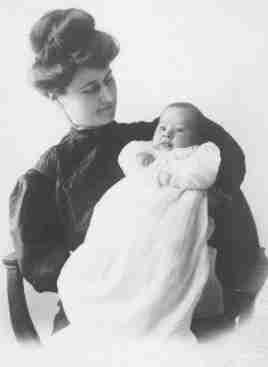
Figure 1.--I believe Lawrence was born about 1905 in Toledo, Ohio. He is pictured here with his mother.


Figure 1.--I believe Lawrence was born about 1905 in Toledo, Ohio. He is pictured here with his mother. |
Many images illustrating historic boys clothes are soletary photographs, often
anonamous images that do not show what the child wore when he was younger and older.
A fascinating series of images from the forst few years of the 1900s are
available for an Ohio boy, Lawrence Ivan Maicie. The photographs show what
Lawrence wore from infanthood to about 10 yeas of age. His doting mother seems
to have been particularly fond of tunics and large floppy bows. The sereies
gives a good idea of the progression of styles for an American boy in the
first decade of the 20th Century.
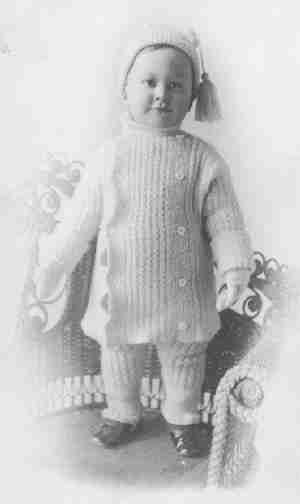
Figure 2.--Lawrence at 1 1/2 sported a double breasted knitted outfit. I'm not sure if this was purchased or knitted at home. |
The seies of photographs unfortunately was not dated. There are meticulos notes
as to the child's age, but nothing indicatiin when the photographs were taken. I
can only guess based on the clothing styles the that the boy wears. The fact that
he only wears dresses as an infant and wears mostly tunics as a
younger boy suggests to me
that he was born after the turn of the century. The fact that as an older boy,
about 10 years old he is wearing kneepants and not knickers and a floppy bow
suggests that it was before the end of Worls War I (1918). Thus my busr guess
is that he was born about 1903 and the final picture of him at about 10 was taken
before 1915, probably about 1912 or 1913.
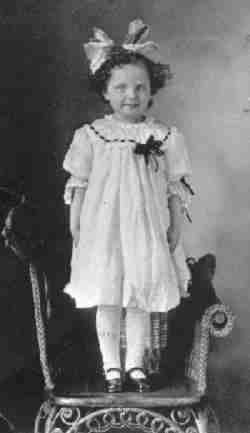
Figure 3.--This young lady appears to be Lawrence's sister. He was photographed in the same whicker chair. |
One interesting feature of these photographs is that much of the family is
pictured, including mother, father (David F.), and grandfather. Lawrence must
have had a sister as a girl is photographed in the same whicker chair in which
Lawrence is photographed. It is not clear if it is an older or younger sister.
Lawrence's mother appears to have been intentnon leaving a detailed photographic
record of her son. This was in part possible because by the turn of the Century,
photography had become much less expensive and had emerged from the studio.
Lawrence's photographs, however, are almost all studio shots. His father apprently had
little interest in photography. The photographs were printed as postcards so they
could be mailed to other family members.
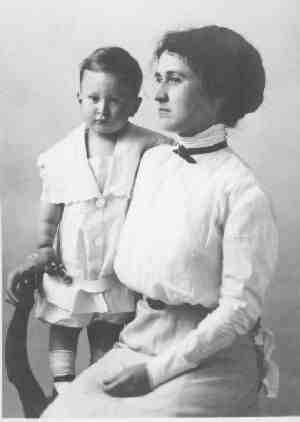
Figure 4.--Lawrence a couple months before his second birthday was wearing an elegant white tunic with emroidered flowers and edgeging on the scalloped lapels. |
The first photographs were taken at the W.L. Milner & Co which apparently was a
department store as the photographswere taken in the sporting goods department.
Mother was, however, unhappy with the results and writes to a cousin (under
Lawrence's name).
Dear Cousin Lori --
The picture man didn't do any better by me than he did by you. Mother says our pictures do not do either of us justice. I am going to a first class picture place next time and see what they can do for me. I am bigger now as I was only 2 months and 18 days when that was taken.
Photographs were taken of Lawrence in several different outfits. Mother appears
particularly parcial to tunics and floppy bows.
After the turn of the century many boys still wore dresses, although increasingly
the dresses escepcially styled for boys. This does not appear to have been the
case for Lawrence. While he wore dresses as an infant, by 1 year of age he was
wearing tunics with bloomer-like knickers rather than dresses.
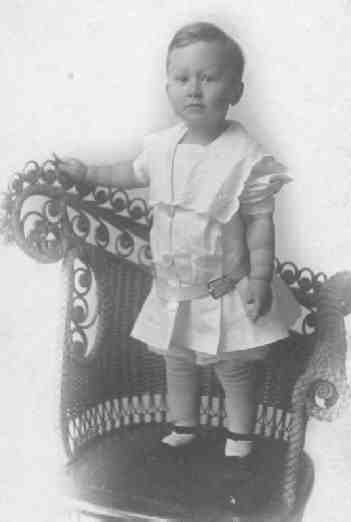
Figure 5.--Lawrence at 2 years of age wears the same tunic suit. Note the open collar and scalloped styling on the collar. In this photograph Lawrence wears white stockings rather than short socks. |
Lawrence as a toddler had a knitted outfit complete with a tassled cap.
His mother may have well actually knitted it for him. It has stylish doub;e
breasted styling. It appears to have been worn rather like leggings. The
knitted outfit is complete with mittens.
Lawrence's mother appears to have been especially partial to tunics, particularly
white tunics. There are several photo of Lawrence wearing tunics. There are
two different tunics, akthough they are both elegant white and of very similar
design. Two of the tunics pictured appear to have been summer tunics as they have
short, slightly puffed sleeves. A third has long sleeves, but still has an open
neck. The two white tunics appear to have been his fornmal party suit for
special occasions. All of the students are basically sailor tunics, rather than the closed neck Russian
style, although none of them have the sailor detailing.
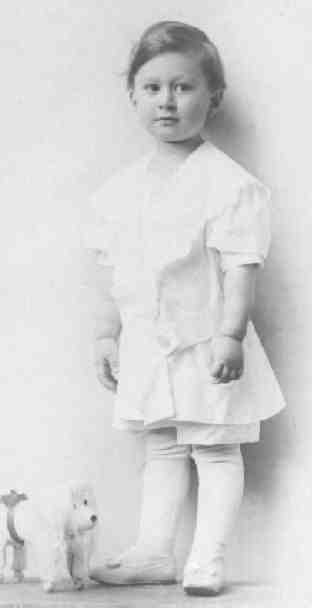
Figure 6.--Lawrence at 3 years of age has a new tunic with some slightly different features. |
The firsr tunic had a comfortable looking open neck. The collar has sailor
influence with a deep "V", but th lapel is much larger and extends horizonaly
and mid chest. It buttons down the front with large whote buttons. The tunic
has a narrow ornamental belt with a metal clasp. It is also white and made out of
the same material as the tunic. The collar has embroidered flowers and scalloped
edging. There are no pockets an either of the dressy white tunics.
The second tunic which he wore as a 3-year old was very similar to
the first. Again it kooks to have been a
summer suit because of the open collar and short sleeves. The collar lapels,
however,
do not run horizontally but rather follow the "v" of the collar. It was also
front buttoning, although the buttons are not so obvious. There is a button
fastner on the belt rather than a clasp.
The third tunic was also a lighted colored tunic, it appears to hav been
a white tunuic with a colored square bok pattern. I am not sure what color the
pattern was, perhaps red or blue. This one was also worn with an open colar, but
had long sleeves. It is almost identical to the styling of the second kilt. It
has a metal clasp. The belt itself is all white and appears to bevmadevout of a different
material than the tunic. I think this was a play suit wrn for every day, although
theconly basic difference was the material. It may be, for example, the same
material worn to ride the pony. Some minor differences are that the sailor
collar is not scalloped, there is no ebroidery work, and there appears to be a
front right pocket.
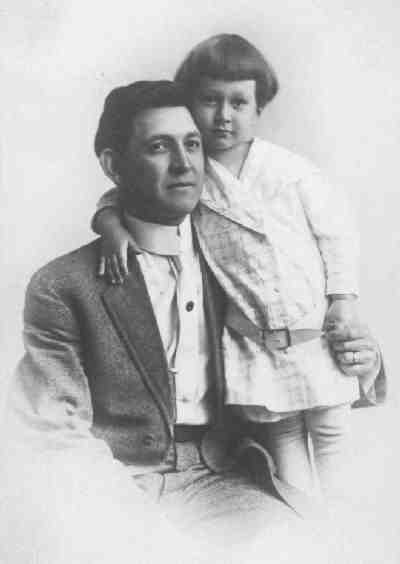
Figure 7.--Lawrence at 4 years of age wears his checkered play tunic for a photograph with his dad. His mother has begun styling his hair in Dutch boy bangs like Buster Brown. |
I'm not sure to what age Lawrence wore tunics. The pgotographs show him wearing them at 4 years of age.
He probably wore them at 5 or even 6, but by 7 years of age he was wearing kneepants suits.
All of Lawerence's tunics are worn with bloomer-like knickers. The knickers
all match the material of the tunic. They are worn at knee length, just slightly
below the hem of the tunic. I'm not sure how the knickers were styled. I
doubt if they were worn with a belt to hold them up. I also do not know if they
had pockets, probably not. The advertisements for these knicker suits generally
show the tunic jacket itself, but rarely the knickers worn underneath.
One photograph of Lawrencer as a younger boy show him in short socks. All the
other photgraphs show him wearing long stockings. He mostly wears white stockings.
I think that dark stickings were generally more common. White stockings were
conidered dressier more formal wear. They seem to have been primarily worn
by girls and little boys. It was less common for older boys to wear white
stockings and in such cases it was almoost always with a formal outfit.
Even so, Lawrence appears to wear white stockings not only for dressy fornmal
occasions, but also wears them for play as a younger boy. He also, however, wears
the white stockings with his tunic and as an older boy with a velvet
suit. Notice that he wears stockings even with his short sleeve, open collar
tunics that were clearly summer outfits. The stockings were made of wool and cannot
have been very comfortable in the warm summer weather. It is understanable
that mother would have wanted stockings for special occasions, it is not know why
she also insistede in them for all his other clothes, including his play clothes.
Lawrence his wearing long over the knee stockings and not tights. Thus
he had to wear some kind of supporter to keep his stockings up. There were
diiffernt types of supporters, including over the shoulder and waist types
which were then attached to the top of the stockings. This was the common practice
in the 1890s, but by the 1900s some boys were wearing tunics without long
stockings. Lawrence's mother aooears to have been rather traditional.
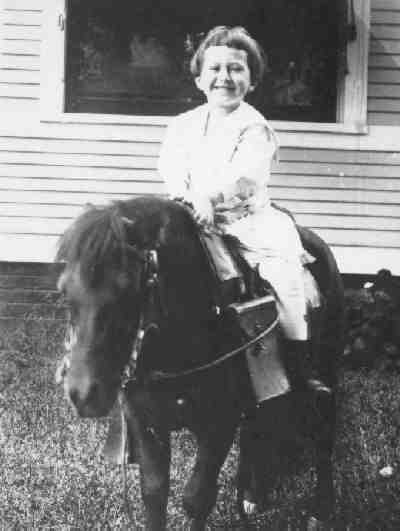
Figure 8.--Lawrence still at 4 years of age wears his checkered play tunic while riding his pony. |
Lawrence as a small boy wore strap shoes with both lonf stockings and short
socks. He also had soft looking white shoes. These do not seem to be the
the kind of shoes that would be worn outdoors.
Lawrence's headgear for formal occasions appears to have been a broad brimmmed
sailor hat. The brim is quite large, but some boys wore even larger ones. In
the one photograph of him wearing it, he has the brimmed turned
stylishly up. I can't tell whether or not is has a streamer or not.
For cooler weather Lawrence had a double breasted coat. Double breasted
styling was particularly popular for coats at the turn of the century.
Lawrence's coat had the classic black velvet
trim on the collar, a style which originated as a indication of sympthy to the
French being executed during the Revolution. I am not sure when this became
a popular style in children's jackets. This is the earliest I have noticed it, but it was
almost surely employed earlier as it was common on many men's coats in the early
19th Century.
The buttons on his coat are big enough that Lawrence may have been able to
button them himself. Large buttons were a common stylistic feature of
clothing for younger children and had the practical advangage of making it
easier for the children to dress. There is also a patch pocket on the coat.
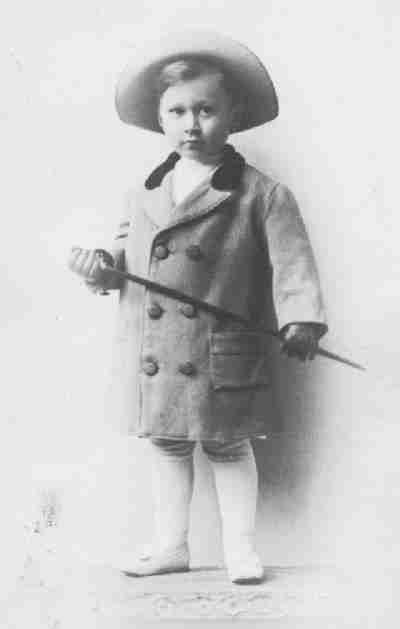
Figure 9.--Lawrence at 3 years and 1 month wore a douuble breasted suit with a wide brimmed sailor hat. He appears to be wearing a white tunic under it. |
Lawrence appears to be wearing a white tunic under his coat. Notably the tunic
under his coat does not have an open collar. None of his other tunics have
closed collars. Perhaps he wore a closed collar tunic in the winter. A white
tunic in the winter, however, seems unusual. White stockings in the winter also
seems unusual. It may be that his mother simply prefered white outfits for him
regardless of the season.
I'm not sure when Lawrence's velvet suit was purchased. He is, however, at
years of age no longer wearing tunics, but instead a dark velvet suit. The
jacket buttons to the neck. Early Fauntleroy suits had small velve t jackets
worn open so the fancy lace-trimed and ruffled blouces could be seen and
admired. You can not even see Larence's blouse as it is completely
covered by the jacket. All that is visible is the collar.
Very few details about the jacket are observable in the photographs. His
jacket has no
visible lapels, an important feature in the suits for older boys. At least four
vertical buttons are observable. They are white or a light color, designed to
contrast with the dark velvet material. There
are also two matching buttons on the sleeve. He wears it with a broad Eton collar
amd floppy bow. The jacket is worn with kneepants that also had buttons at the
knee, but which seem to be ornamental.
I am not sure what color the suit was. The available black and white
photography gives the mistaken impression that all velvet suits were black because most were either black or
various dark shades. It seems to me that the suit is not
as intense a color one would expect for a black suit. Such suits were available in
several colors, including burgandy, royal blue, brown, and forrest green. Just
what color mother selected for Lawrence is unknown.
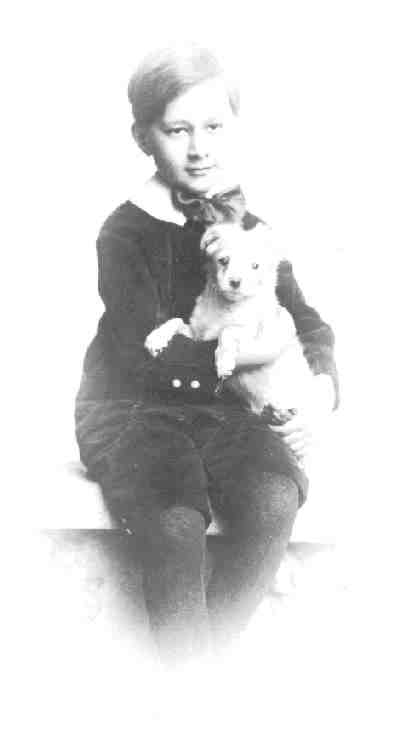
Figure 10.--Lawrence at 7 years was wearing a velvet kneepants suit with an Eton collar and floppy bow. The bow appears to be a solid color. |
There are few stylistic features observalble on the suit it self. The jacket
does appear to blouse out a bit and seems to be worn more as a blouse
than a jacket. There is some detailing at the wrist on the sleeves, accompanied by
buttons. Note that there are no shirt sleeves visible at the sleeves.
Lawrence wre his velvet suit with both white and dark stockings. I am not
sure what determined whether he wore the white or dark ones. Perhaps it was
seasonal. More likely it was related to the formality of the occasion. Boys at
7 were increasingly less likely to wear white long stockings. Increasingly they
were being more commonly worn by girls. Many boys, however, were still wearing
dark long stockings with both kbeepants and knickers.
Few details on the kneepants are observable in the kneepants. I presume
that they has pockets, although thet are not visible in the
photograph. There are two buttons at the hems of the pants, although
three were more common. This matchescthe two buttons at the wrist on the
skeeves. I believe that he has been photographed wearing his new suit sometime before
1910. This would mean that
it was at a time that kneepants were still widely worn, but beginning to go
out of style. Knickers but not short pants
were becoming increasingly popular for American boys. I believe his outfit
would have been seem as a little old fashioned for the time, but only slightly so.
Lawrence wears a crisp Eton collar with his velvet suit. Older boys would not
wear a floppy bow with their Eton collars. Older boys would wear no bow
at all or a kind of bowtie. A few years dearlier it would have been unusualy to
see a boy of 7 wearing a plain Eton collar. Rather such a boy would have much more
likely to have worn a fancier ruffled or even lace collar which could have been
substantially larger. Ruffled collars for boys had become especailly popular at
the turn of the Century. In all the avilable photographs of Lawrence as an older
boy he appears in an Eton collar.
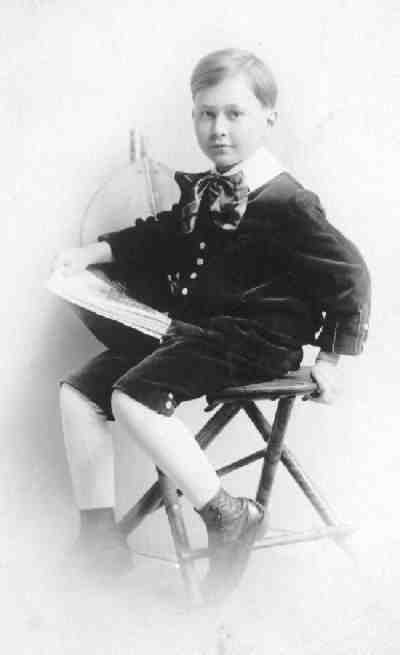
Figure 11.--Lawrence at 7 1/2 years agains wears his velvet kneepants suit, this time with a floppy bow and dressy white stockings. Note that he wears a plaid bow in this photograph. |
Lawrence did not wear bows as a younger boy. Many boys at the time did. A
large floppy bow was a common feature for the Buster Brown tunics commonly
worn by American boys at the turn of the Century.
The available photographs of Lawrence as an older boy all show him wearing a floppy
bow. In one photograph it appears to be a dark solid color. In two others it
is a colorful plaid. It no doubt added a little color to his dark colored suit.
These bows were very important to a boys outfit and undoubtedly were carefully
tied by mother. I doubt if father would tie the bows in such an elegant matter.
Presumably this was always done by mother.
Lawrence wears his bow for both formal and less formal occasions. He wears the
bows with his velvet suit. He also wears it, however, on less formal occasions--perhaps
during the summer. Note the bow below when he is hust weaing a blouse without
a jacket.
It is unclear whay kind of blouse Lawrence wears with his velvet suit as only
the Eton collar is visible. The photograph with his father and grandfather
shows what his blouses looked like. It is a blouse and not a shirt as there
are no shirt tails. Even without his jacket he appears to be wearing the same
large plaid floppy bow. This could be the type of blouse worn with his velvet
suit. He wears it with an Eton collar.
The shoes he wears with his velvet suit are button shoes. The upper part of
the shoe appears to be a different material than the lower part of the shoe. I
do not know enough about shoes to explain the style adequately.
Lawrence appears to have primarily worn short hair. At age 4, however, his
mother began styling it in Dutch boy bangs. This was the hair style worn by Buster
Brown who almost always was outfitted in tunics. By the time he is 7, however, he
wears xshort hair with his velvet suits.
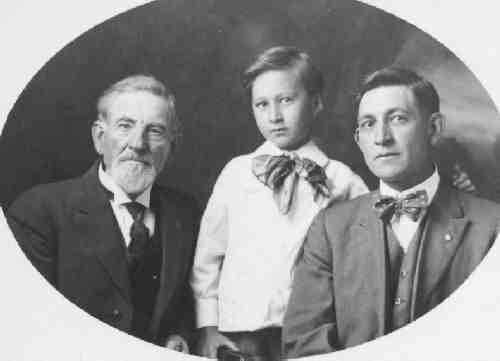
Figure 13.--Lawrence is pictured here, I think at about 9 or 10 years with his father and grandfather. Notice the Eton collar and floppy bow. |
Some intereting props are noticeable in several of the photographs. Lawrence appears to
have liked dogs. One early photograph of him still in a tunic shows him with a
white poodle pull toy dog. The white toy dog matches his white tunic. The
photograph in a coat shows him holding what I think is a walking stick. The
most charming photograph shows Lawrence hlding a puppy. I think this shows his
mother was a rather permissive soul. Many mothers would have been rather upset with
their sons getting dog hair all over his best velvet suit. Another photograph
shows him rather studiously holding a book.
Navigate the Boys' Historical Clothing Web Site:
[Return to Main biography page]
[Return to Main United States page]
[Introduction]
[Chronology]
[Clothing styles]
[Bibliographies]
[Activities]
[Countries]
[Contributions]
[Boys' Clothing Home]
